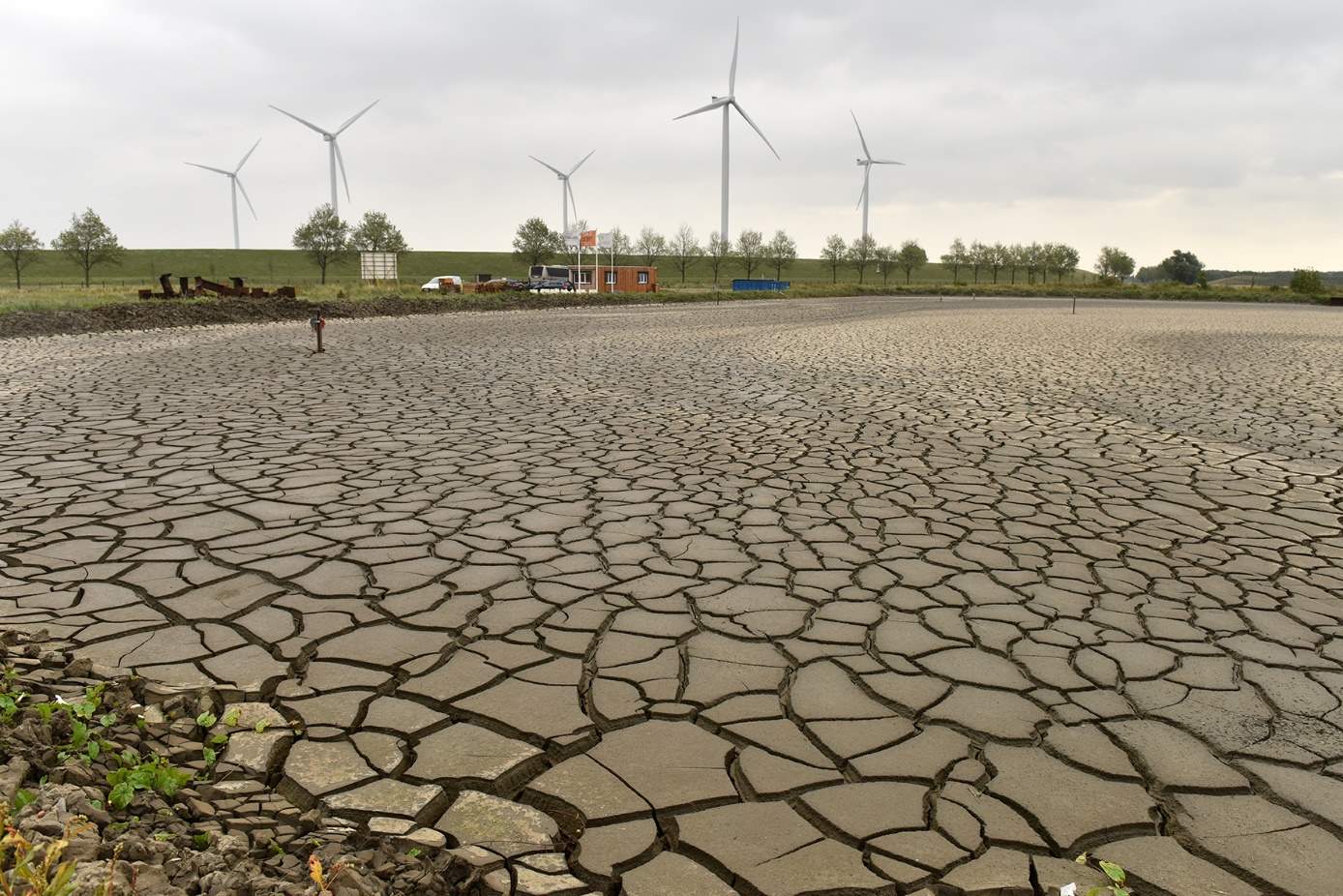Clay ripening pilot
Too much mud is unfavourable for the water quality and biodiversity in the Ems-Dollard Estuary and its sedimentation can shallow channels, which need to be dredged. Would it be possible to efficiently and effectively transform this mud into building material for dikes?
EMS-DOLLARD 2050 PROGRAM
The Ems-Dollard Estuary, in the northern part of the Netherlands, is a unique nature reserve. However, at the present day the mud content in the estuary is too high. Within the Ems-Dollard 2050 (ED2050) project, the government, nature organisations, companies and consultancy work together to restore the nature in this area, maintain water safety and create new economic opportunities.
Within the ED2050 program are multiple projects, one of which is the Clay Ripening Pilot. This pilot is an initiative of a knowledge consortium composed of Royal HaskoningDHV, Rijkswaterstaat, the province of Groningen, Water board Hunze en Aa’s, Groninger Langschap, Groninger Seaport and EcoShape. Ecoshape develops and shares knowledge about Building with Nature concepts. Building with Nature is a new way of thinking, in which natural processes are used to create opportunities for nature, society and economy.
BUILDING BLOCKS OUT OF MUD
The Ems-Dollard Estuary has an excess of mud in the water column, which strongly reduces primary production and thereby inhibits the basis of a healthy ecosystem. Mud is also unfavourable in the light of shipping fairways, because it settles and needs to be dredged out to maintain navigation depth. At the same time, there is a need for clay to strengthen the dikes along the Ems-Dollard estuary and elevate the surrounding low-lying areas.
Currently, little is known about effective ways to transform dredged mud into clay that is usable for dikes. Therefore, dredged material is presently released in the water at a different location, which further increases the turbidity of the water with the resulting negative consequences for ecology. Besides, over time water currents will transport the mud back to harbours and fairways, which need to be dredged out again. Developing and optimising a strategy to capture and use mud would therefore mean a win-win case, which is the goal of the partners in this project.
INNOVATIVE CLAY RIPENING
Royal HaskoningDHV has knowledge of and experience with the system-scale problems in the Ems-Dollard Estuary. We combine our expertise with the knowledge and experience within Ecoshape to test the feasibility of clay ripening and develop business cases of innovative and scalable methods. In this analysis, we include costs and benefits of multiple methods including potential risks. The business case is continuously undated during the project that runs from 2018 till 2021.
At this moment, researchers are carrying out trials. In these trials, the composition of clay is investigated, because certain criteria must be met to be suitable for dike reinforcement. An area of 14 acres has been assigned for the pilot at Delfzijl, which has been subdivided in 15 plots. Ripening conditions are varied among plots, such that the results can indicate which drainage, layer thickness, vegetation and resuspension strategies are most optimal for the clay composition. In another basin, samphire is used to desalinate the mud.

WORLDWIDE APPLICATIONS
The challenges facing the Ems-Dollard Estuary are not unique: they occur worldwide. Sedimentation of mud in harbours, rising sea-level and land subsidence ask for novel and inventive solutions. The knowledge obtained from the Clay Ripening in the Netherlands can now be used to design and implement other profitable cases. This Nature-Based Solution can contribute to optimising management of sediment in harbours, while facilitating biodiversity and maintaining flood safety worldwide.
CONTACT
Petra Dankers
Senior Project Leader & Advisor Morphology and Eco-engineering
Nijmegen, NL
+31 88 348 68 69
+31 6 11 91 41 63
petra.dankers@rhdhv.com